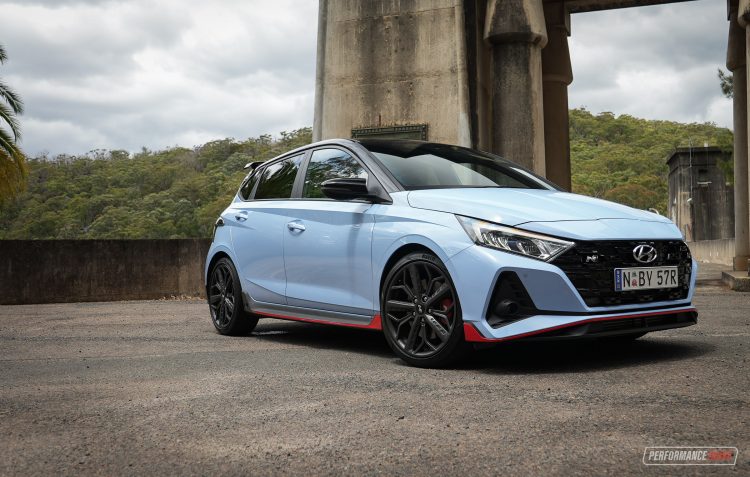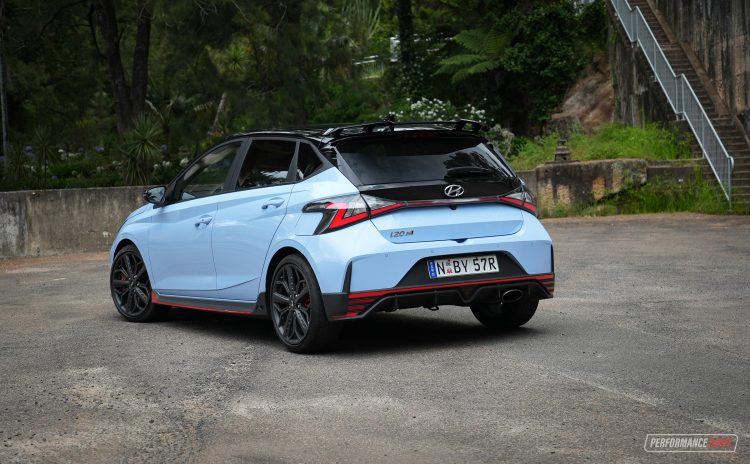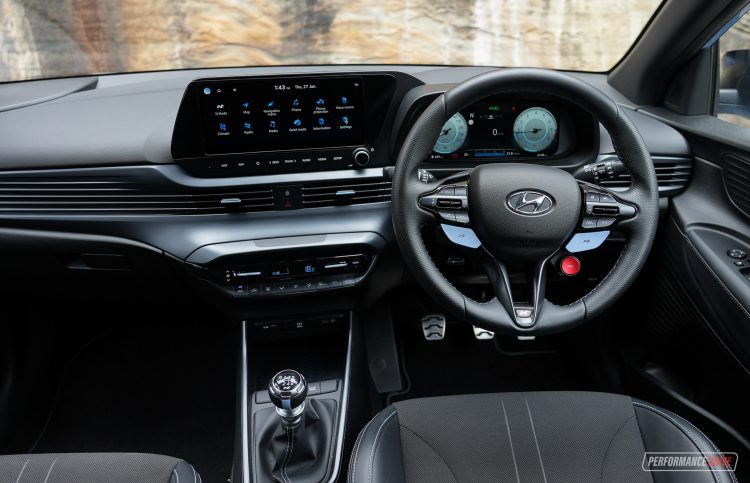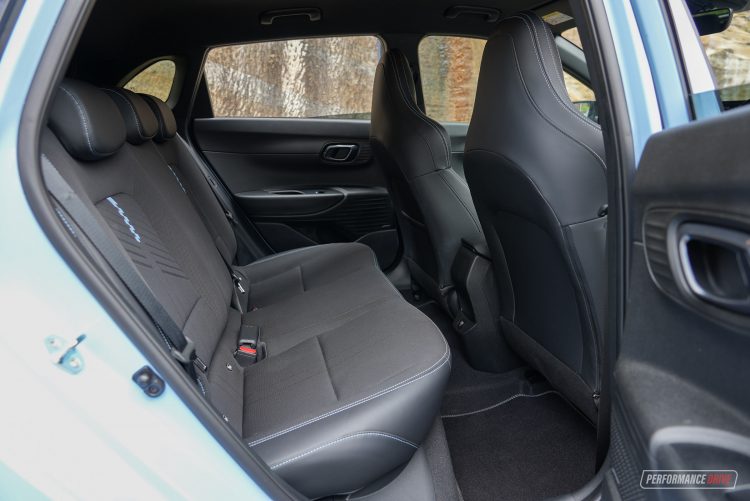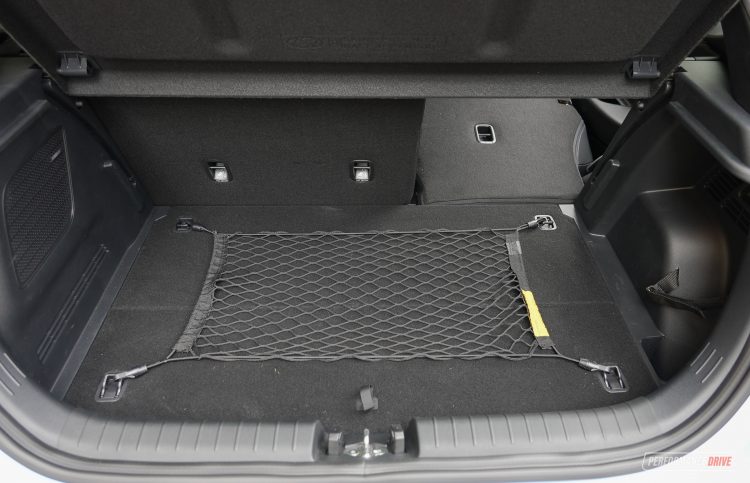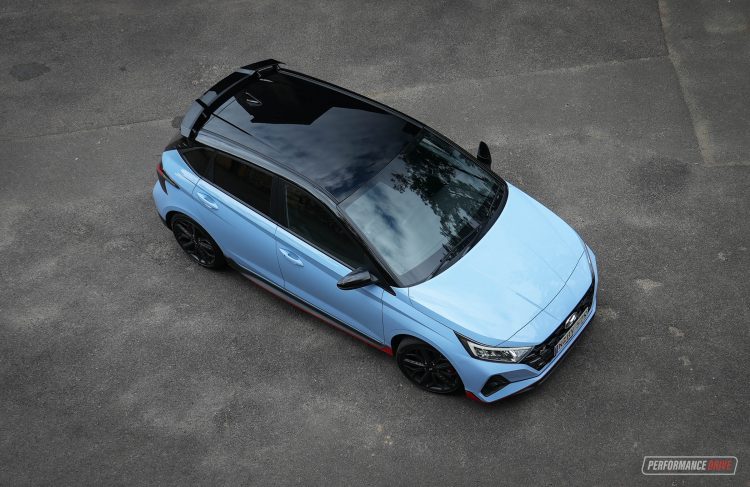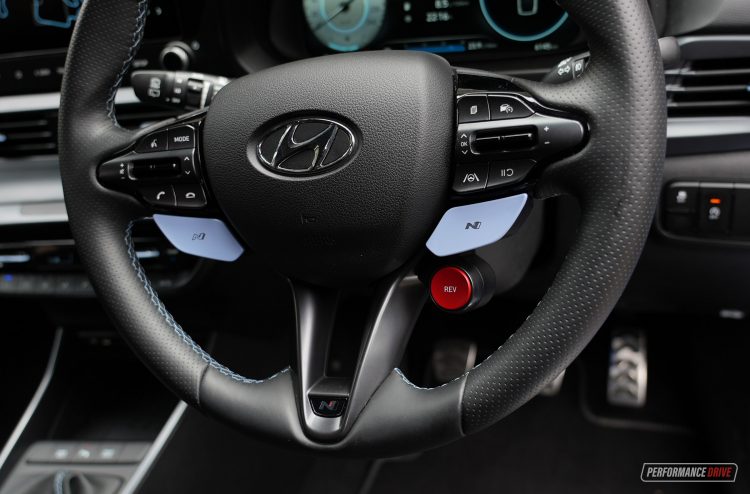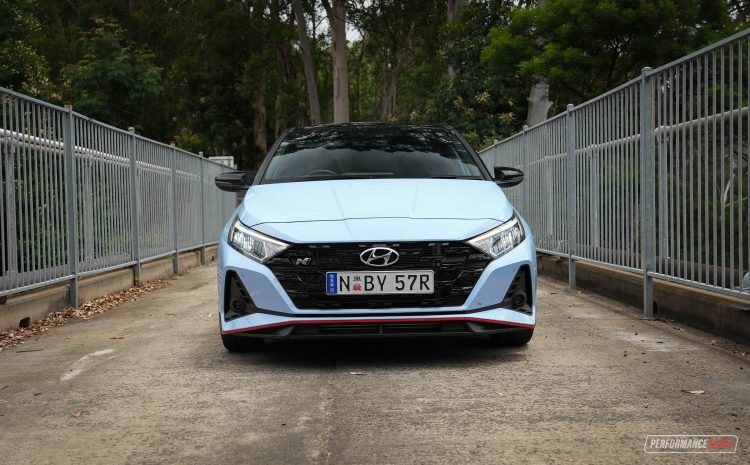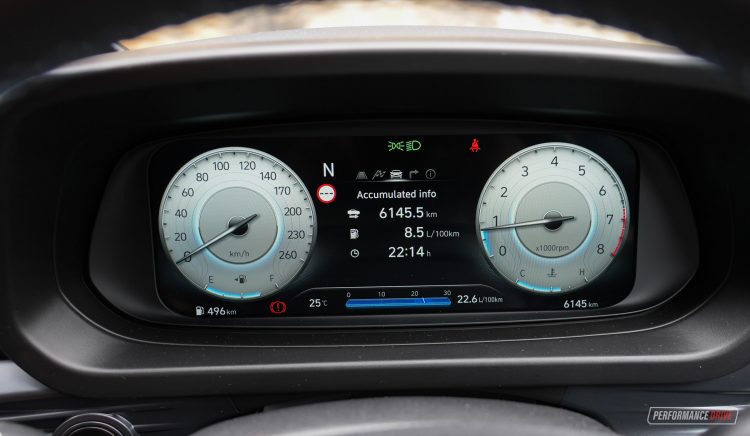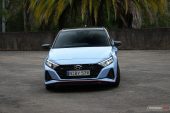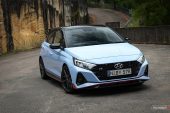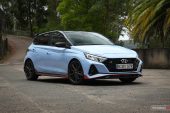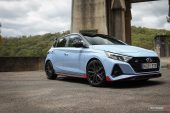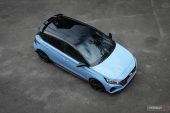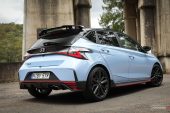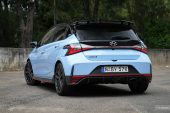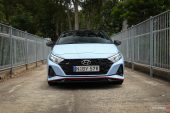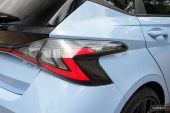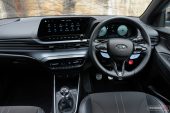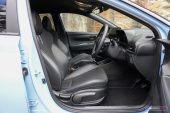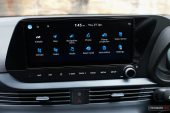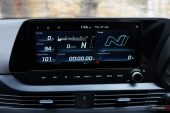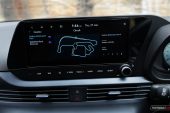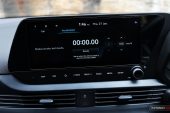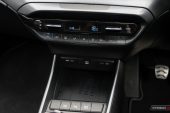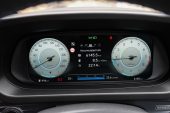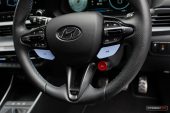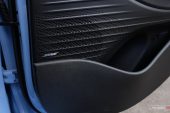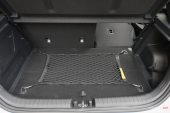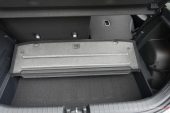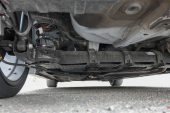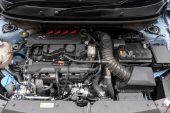These are the sorts of cars us at PerformanceDrive get excited about. Hyundai is very kind to offer an N performance model for nearly every sedan and hatch in the showroom, no matter how small.
The Hyundai i20 N joins the likes of the Ford Fiesta ST, Toyota GR Yaris, and Volkswagen Polo GTi in what seems like a revival of small hot hatches. It’s playtime.
The Turkish-built i20 N makes all the right moves to package together a pint-sized pouncing engine in a lethal-looking body that loves to hammer around corners. In true sport style, it is available in six-speed manual only. Prices begin at $32,990 (excluding on-road costs), making it one of the most affordable options on the market.
2022 Hyundai i20 N – THE SPECS
[column width=”47%” padding=”6%”]Engine: 1.6-litre turbo four-cylinder
Output: 150kW@6000rpm / 275Nm@1750-4500rpm
Transmission: Six-speed manual
Drive type: Front-wheel drive, limited-slip diff
Wheels: F & R: 18×7.5, 215/40
ANCAP: Not tested
Tare weight: 1213kg
Power-to-weight: 8.08:1 (kg:kW)
Official fuel economy: 6.9L/100km
Economy during test: 6.6L/100km
Fuel capacity/Type: 40L/91 RON[/column] [column width=”47%” padding=”0″]Power efficiency: 21.73kW:L/100km
0-60km/h: 3.41 seconds*
0-100km/h: 6.67 seconds*
60-110km/h: 4.27 seconds*
1/4 mile: 14.72 seconds at 157.0km/h*
Max acceleration: 0.728g*
100-0km/h braking: 2.93 seconds at 35.85 metres*
Max deceleration: -1.265g*
Decibel at idle: 41/45*
Peak decibel at 60-100km/h: 88*
Priced from: $32,990[/column][end_columns]
* Figures as tested by PerformanceDrive on the day. Factory claims may be different
2022 Hyundai i20 N – THE PACKAGE
Starting with the external design. If the look of the i20 N doesn’t turn your head, no car will. Hyundai has done another exemplary job in revealing exactly what the i20 N is all about through design alone. The sharp edges and angles at the front and the angry slanted headlights look intense. A glossy black grille like a chequered flag and black traces around the headlights contrast brilliantly with the paintwork.
And there are some awesome-looking paint colours to choose from. For an extra $1000, you can get a two-tone paint package that adds a black roof, black side mirrors, and a red pin stripe around the bottom skirts of the entire car. This test car has it, with the iconic Performance Blue. It looks hot.
At the rear end, the racetrack theme continues. A prominent glossy black spoiler sits on top and matches black panelling between the taillights. Those sharp taillights and red pinstripes on the lower bumper make the i20 N look more edgy. Even the side aspect of the hatch looks energetic with those 18-inch matt grey alloy wheels, red brake callipers, and an overall downward swoop to the front that eagerly tells you it has a job to do.
On the inside the interior keeps the theme going with soft blue touches. You see it in the leather stitching, ‘N’ steering wheel buttons, air vent adjustments, and the edge of the door handle. It also feels like it’s all made of high-quality materials. The layout is striking but still simple to navigate. Buttons are neatly laid out and sectioned. As seen in the Hyundai Sonata N Line, the air vents integrate into the design of the dash with no surrounds, so you don’t know they are there.
There are two 10.25-inch high-quality digital displays in front – one for the instrument cluster and one for the centre touch-screen. Like with other Hyundais, they are crisp, clear and the layouts are quick to grasp.
Being a small hatch, we shouldn’t judge on interior size. But it’s surprisingly roomy. The back seat is actually comfortable and spacious enough to travel in. We’re glad there is a centre armrest in the front too. This is often non-existent in other hatches of the same category. There are a few handy shelves and pockets to throw your belongings into.
The boot space is 310 litres, which is adequate for the weekly shop. And it expands out to 1123 litres if you fold the rear seats down, allowing it to easily swallow longer objects.
N-spec models are top-of-the-range for Hyundai, which means the i20 N is loaded with a suite of features. In terms of safety, you get blind-spot sensors, forward collision autonomous emergency braking with pedestrian detection, front and rear parking sensors, auto-dipping high beam, active lane departure warning, road sign recognition, tyre pressure monitoring, and rear cross-traffic alert.
You also get an eight-speaker Bose sound system, wired Android Auto and Apple CarPlay, a wireless phone charger, rain-sensing wipers, ambient interior lighting, climate-controlled air-con (single zone), heated and powered side mirrors, and alloy sports pedals to name a few. But distance-controlled cruise control is not included.
Hyundai instigated the trend to offer generous warranties, and it continues. The i20 N comes with a five-year, unlimited kilometre warranty with one-year of free roadside assistance. Warranty also covers track driving so long as you are not competing in an official event. Servicing is required every 10,000km or 12 months (whichever comes first).
2022 Hyundai i20 N – THE DRIVE
It’s not all looks. The i20 N ‘does’ too. Getting behind the wheel is exhilarating. On paper, 150kW and 275Nm doesn’t sound like much, but it only weighs 1213kg. So, it feels very light on its feet on take-off. That power comes from Hyundai’s 1.6-litre turbo petrol ‘SmartStream’ engine that drives the front wheels only. The official 0-100km/h test is 6.2 seconds, and the best we’ve measuring is 6.67 seconds. It keeps ahead of the stream of traffic with ease. Then, when you demand power, it launches willingly without delay. It’s a little ripper.
The engine feels like it loves to rev. The daily chores will regularly see you push it above 3500rpm, and that is okay because it feels free and untethered up there. In fact, it almost invites you to take it further.
To add to the thrill, there is an active variable exhaust system that changes when you select between three different exhaust modes (Normal, Sport, Sport+). In the sport modes the exhaust lets off a neat snort between gear changes and pops and flutters during deceleration.
The six-speed manual gearbox feels slick and forgiving when pushed around. And the clutch friction point is more towards the end of the pedal lift. Though, the engine spins quite high at higher speeds (about 2800rpm at 110km/h). It is also equipped with an automatic rev-matching feature. This is where it matches the engine revs to the gear before the clutch is released to speed things up. It undeniably helps rip through the gear ratios quickly when driving spiritedly and makes clutch work super smooth. You can turn it on and off via an attractive red button on the steering wheel.
Adding to the interactive package are some racing tools like on-board lap and acceleration timers, an electronic sound generator, a manual handbrake, a g-force gauge, throttle metre, and engine temperature, turbocharger boost and brake gauges.
In true racing style, it also scores a mechanical limited-slip differential and launch control to give better traction and stability. Of course, there are six drive mode settings (Eco, Normal, Sport, N, Custom 1, Custom 2) in what Hyundai fittingly calls the ‘N Grin Control System’. Sport mode is a good happy medium as it provides snappy response and it allows some wheelspin for play.
The lightness is noticed in its dynamics. Quickly switching directions is not a problem. It feels like you can zip it around any corner without limitation. Obviously best experienced on a race track because that’s where the i20 N ultimately belongs. Using it on regular rough roads reveals jarring suspension for everyday use. Which really is a given for this type of car.
That rigid suspension is made up of MacPherson struts at the front and a torsion beam at the rear. The combination of minimal body roll and a sharp turn-in makes driving it around in a civilised manner almost too sudden and sensitive. But again, this is what most of us fans want. The great thing is even though it’s a small car, it still feels well-weighted and stable at higher speeds. Feedback feels real, adding to the i20’s engaging nature.
You can thank the Pirelli P-Zero tyres for all the grip. But there is a fair amount of road noise in the cabin at higher speed. It sounds more like tyre roar. You could always drown it out by putting it in Sport mode to bring on the subtle hum from the exhaust.
Braking is strong, and the feel is confident, thanks to large 320mm front ventilated discs, and 262mm rear solid discs. Again, the low kerb weight helps here. We tested 100-0km/h in a best of just 35.85 metres, which is similar to what we see on high-end sports cars like BMWs and some Porsches.
Among all the performance that comes with the i20 N, fuel consumption is still decent. Official figures label it with 6.9L/100km, but our experience was even better, at 6.6L/100km over about 450km – we mustn’t have been driving it hard enough. Surprisingly, it can run on 91 RON fuel and E10, yet it still meets Euro 6 emission standards. But, new to Hyundai, the SmartStream engine introduces start/stop tech – not really something you want to see in a hot hatch.
2022 Hyundai i20 N – THE VIDEOS
2022 Hyundai i20 N – THE VERDICT
It’s not just a ripper of an engine, or that it feels like it can take on any corner at any speed that makes it an exciting hot hatch. Not even that strikingly sporty external design. No, it’s the entire package put together that makes the Hyundai i20 N exhilarating and interactive.
We love that it comes in manual form, and that the exhaust noise is clearly heard. On top of all that appeal, the price is right and packaging is exceptional. It’s full recommendation from us.
[column width=”47%” padding=”6%”]PROS:
– Eager engine that feels happy to rev, and sounds awesome
– Brilliant handling feels planted, sharp, and lots of fun
– Excellent fuel consumption and can runs on 91 RON
– Killer external design
– Surprisingly well packaged inside in terms of space and features
[/column] [column width=”47%” padding=”0″]CONS:
– If you’re not a performance enthusiast, the bumpy ride might override the sporty experience
– No distance-controlled cruise control[/column][end_columns]
As always, if you’re thinking about buying a new car don’t forget to click here to speak with our car buying specialists.
